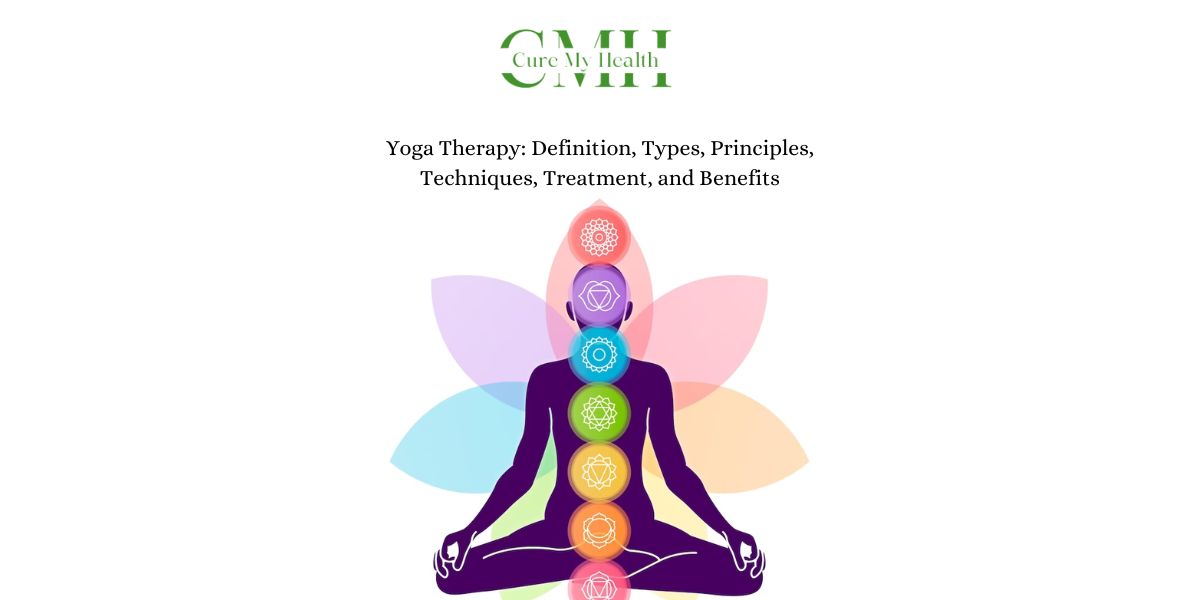What Is Yoga Therapy?
Yoga therapy may be defined as the application of yoga principles to a person with the objective of achieving a particular spiritual, psychological, or physiological goal. That means employed are intelligently conceived steps that include but are not limited to the components of Ashtanga Yoga, which includes the educational teaching of Yama, Niyama, Asana, Pranayama, Pratyahara, Dharana, Dhayana and Samadhi.
Yoga therapy is a type of therapy that uses yoga, postures, breathing exercises, meditation, and a guided imagination to improve mental and physical health. Yoga therapy is a type of therapy that focuses on the integration of health. The modern term ‘ yoga therapy’ was coined by Swami Kuvalayananda in the 1920s, who believed that it would be possible to measure the physical and psychological changes that occurred to throw away yoga practice. These days yoga therapy has become so popular that many doctors are not supporting it.

What is the Difference Between Yoga and Yoga Therapy?
There are many differences between yoga and yoga therapy, both belong to self care and exercise. Let’s know the difference between yoga and yoga therapy:
Yoga: Background
A five thousand years ago, a practice of yoga originated in India. It is a form of exercise and spiritual practice which involves a huge series of poses and methods of meditation which help to support physical and mental well-being. According to Patanjali, yoga helps to manage your emotions and gain spiritual expansion. Today’s yoga can be found in a variety of forms and practiced by people to build physical strength , flexibility, remove stress and simply meet with new people.
Yoga Therapy:
Yoga and yoga therapy can be therapeutic and practiced in a group setting or one-to-one, and share techniques. However, know the key differences:
- When you visit a yoga therapist, the patients undergo an assessment for engaging in any practice.
- An individual patient’s treatment plan will be made up, which can be modified as treatment processes according to the patient’s response.
- A well-qualified yoga therapist has a higher level of training as compared to a yoga teacher. They have some essential skills, these are:
- Has the ability to read and understand medical terms
- He has the ability to be familiar with a wide range of physical and medical conditions such as diseases, symptoms, effects of medicine, and contradictions.
- A comprehensive knowledge of prescribed yoga for relevant diagnosis.
Overall, the role of yoga therapist is quite distinct from yoga teacher. It is possible to argue any time with a person for yoga and yoga therapy, to overcome a mental health problem that can engage with yoga therapy.

Types of Yoga Therapy
Why do you get therapy is typically performed on an individual basis, some type of yoga therapy includes a group element, where multiple people work together with a therapist in a small group, and her power of the group is part of the healing process, says Romanoff.
Principles of Yoga Therapy
Along with Being a way of life, it is also considered a practical science with five principles forming its core-
- Proper exercise (Asana)
- Proper breathing (Pranayama)
- Proper relaxation
- Proper diet and nutrition
- Meditation and positive thinking
Yoga Techniques
According to Romanoff, yoga therapy can involve several techniques such as:
- Yoga postures
- Asana practice
- Varied Mudras
- Breathing Techniques
- Spiritual, or physiological counseling
- Meditation
- Relaxation
- Promotion of overall lifestyle changes
The treatment plan and techniques used in yoga therapy can vary based on your age, physical ability, and unique needs, says Romanoff. Homework is an important element of yoga therapy that the practice can be built into the person’s daily life instead of being standalone exercises at weekly therapy sessions, says Romanoff. More traditional forms of yoga therapy can also involve other techniques such as chanting, prayer, textual study, ritual, imaginary spiritual counseling.
Yoga Therapy Treatment
Yoga therapy can be helpful in the treatment of mental health conditions such as
- General disorders like Anaemia, Insomnia, vertigo.
- Emotional disturbance, including mood disorder, stress, and anxiety.
- Gastrointestinal
- Alcohol, dependence
- Panic disorder
- Bipolar disorder
- Autism
- Diabetes
- Depression
- Post-traumatic stress disorder
- Phobias
- Fatigue syndrome
- Gynecological disorder
- Skin disorder
These are the names of your health concerns that can be treated all managed with the help of yoga therapy. However, the number of diseases that can be treated, healed, or managed by yoga. Therapy is numerous. Even if yoga therapy cannot heal the health issue entirely it can surely help to reduce the symptoms and bring the patient to comfort.

Benefits of Yoga Therapy
These are some of the benefits of yoga therapy:
- Yoga can cause arthritis symptoms: – Gentle yoga has been shown to alleviate some of the discomforts of tendons, and swollen joints for people with arthritis, according to a Johns Hopkins review of” recent studies”.
- Physical health benefits: -in addition to helping with mental health conditions, yoga therapy can also improve physical fitness, and increase strength, balance, and flexibility. It can also help with physical health conditions such as pain, blood pressure, heart disease, diabetes, obesity, and arthritis.
- Yoga, relaxes you, to help you sleep better: – Research shows that a consistent bedtime routine can help you to get in the right mindset and prepare your body to fall asleep and stay asleep.
- Yoga can mean more energy and brighter moods: – You may feel an increased mental and physical energy boost in alertness and enthusiasm and if you’re negative feelings after getting into a routine of practicing yoga.
- Yoga helps you manage stress: – According to the National Institute of Health scientific evidence, shows that yoga supports stress management, mental health, mindfulness, healthy eating, weight loss, and quality sleep.
Summing Up:
The purpose of your what is to create how many in the physical, vital, mental, physiological and spiritual aspects of the human being. Yoga is not mere practice for any human being. Yoga is not mere practice for an hour or two in a day, but it is the most scientific way of living. All the 24 hours of the day by regular practice by using your presence of mind, skill and wisdom you can become yogin’s and enjoy happiness, and peace, what would be the circumstances and condition in which you are placed.













